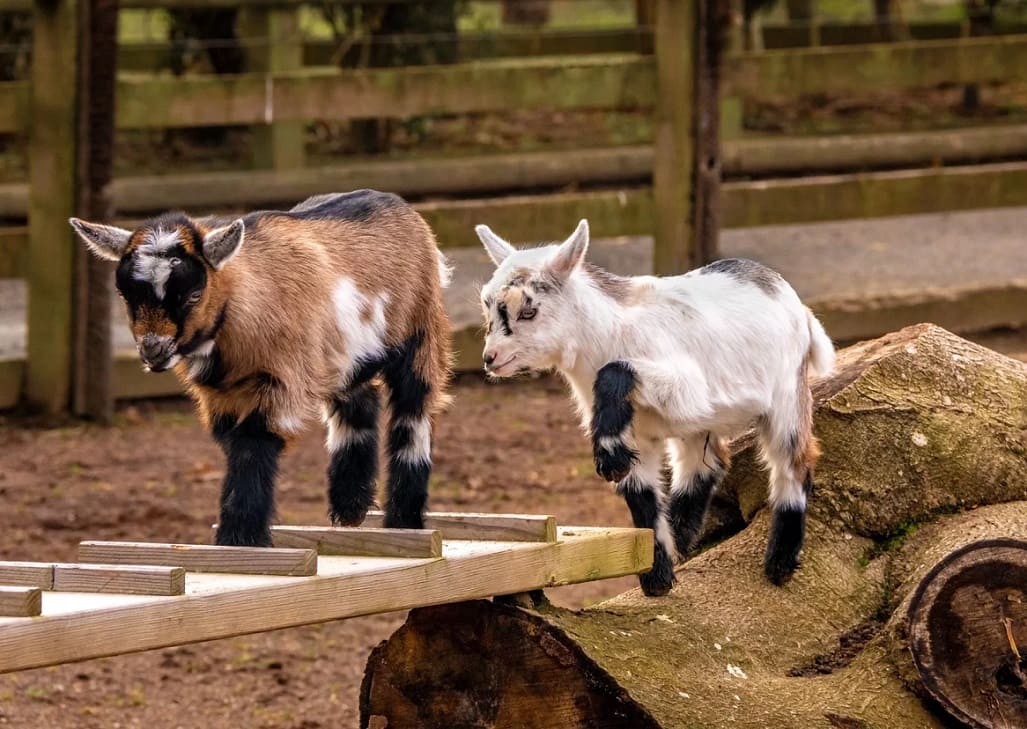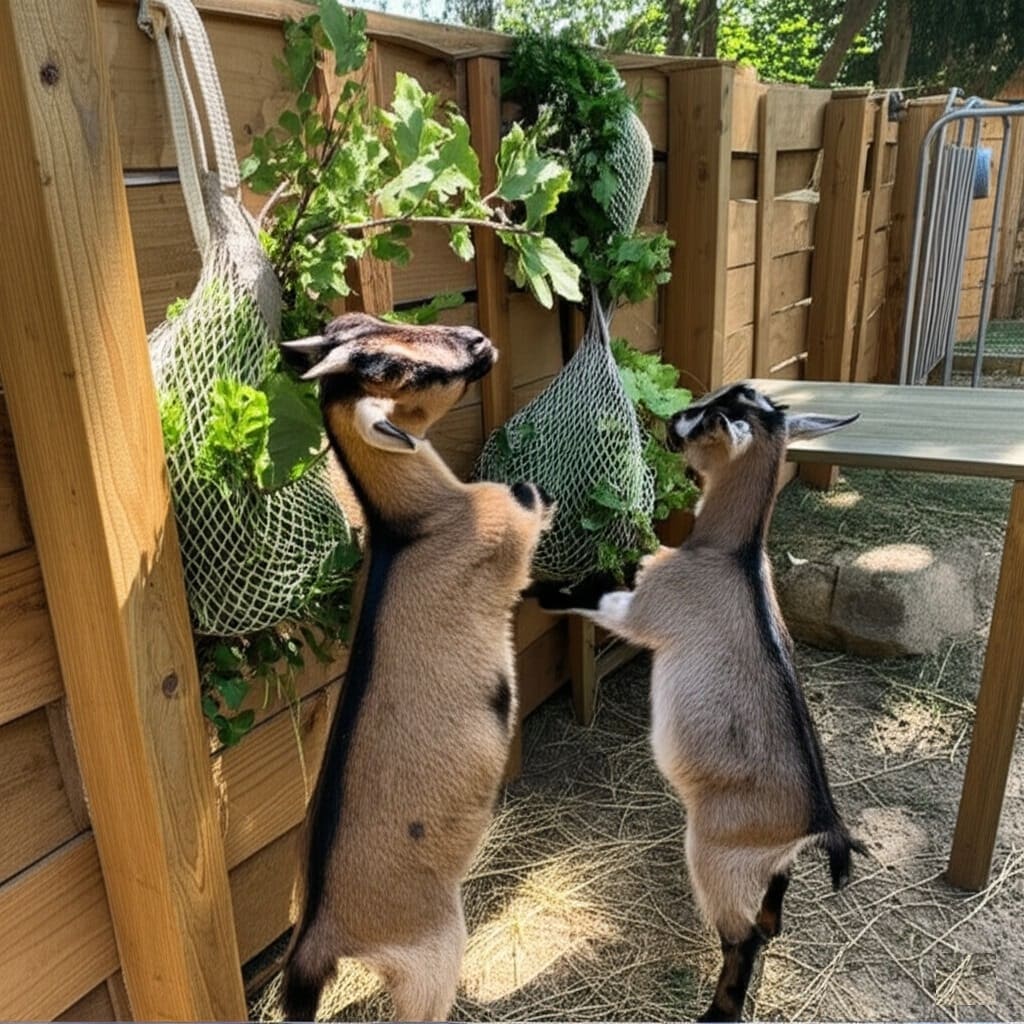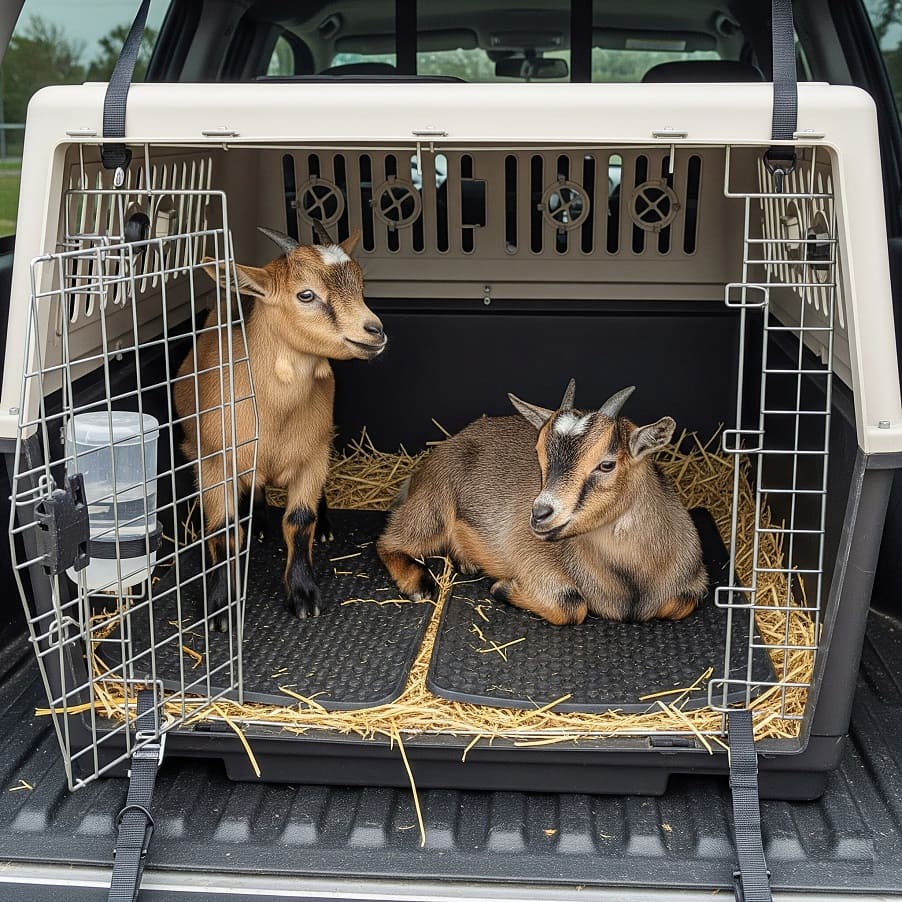The first time I saw a pygmy goat kid jumping on a wooden spool in my neighbor’s backyard, I was completely smitten. This tiny, caramel-colored creature with bright eyes was performing what could only be described as acrobatic stunts, leaping from platform to platform with the confidence of a circus performer.
“That’s Peanut,” my neighbor Sarah laughed, watching my enchanted expression. “She thinks she’s training for the Olympics.”
That moment changed everything. Six months later, I found myself the proud caretaker of two pygmy goats, and let me tell you – nothing quite prepares you for the delightful chaos that these pint-sized personalities bring to your life.
If you’re considering adding pygmy goats to your family, you’re in for a treat. But before you fall head-over-heels for their adorable antics (and trust me, you will), there are some essential things you need to know.
This guide will walk you through everything from housing requirements to health care, helping you determine if these miniature marvels are the right fit for your lifestyle.
What Exactly Are Pygmy Goats?
Pygmy goats are like regular goats that got shrunk in the wash – but in the best possible way. Originally from West Africa (specifically the Cameroon region), these compact companions typically stand just 16-23 inches tall at the shoulder and weigh between 40-85 pounds when fully grown.
To put that in perspective, they’re roughly the size of a large dog, but with significantly more personality per pound.
These little dynamos come in a stunning variety of colors and patterns. You might find solid black beauties, caramel-colored cuties with dark markings, or striking agouti patterns where light and dark hairs create a grizzled appearance. Some have frosted points on their ears and muzzles that make them look like they’ve been dusted with powdered sugar.
Personality Plus:
What really sets pygmy goats apart isn’t their size – it’s their incredible personalities. These are the class clowns of the livestock world. They’re curious, playful, intelligent, and surprisingly affectionate.
- Read more about Miniature Cattle: The New Trend in Livestock Ownership?
My goats, Maple and Clover, have distinct personalities that never fail to entertain. Maple is the bold explorer who’s always the first to investigate anything new, while Clover is more of a gentle soul who prefers cuddles to adventures (though she’ll never admit it).
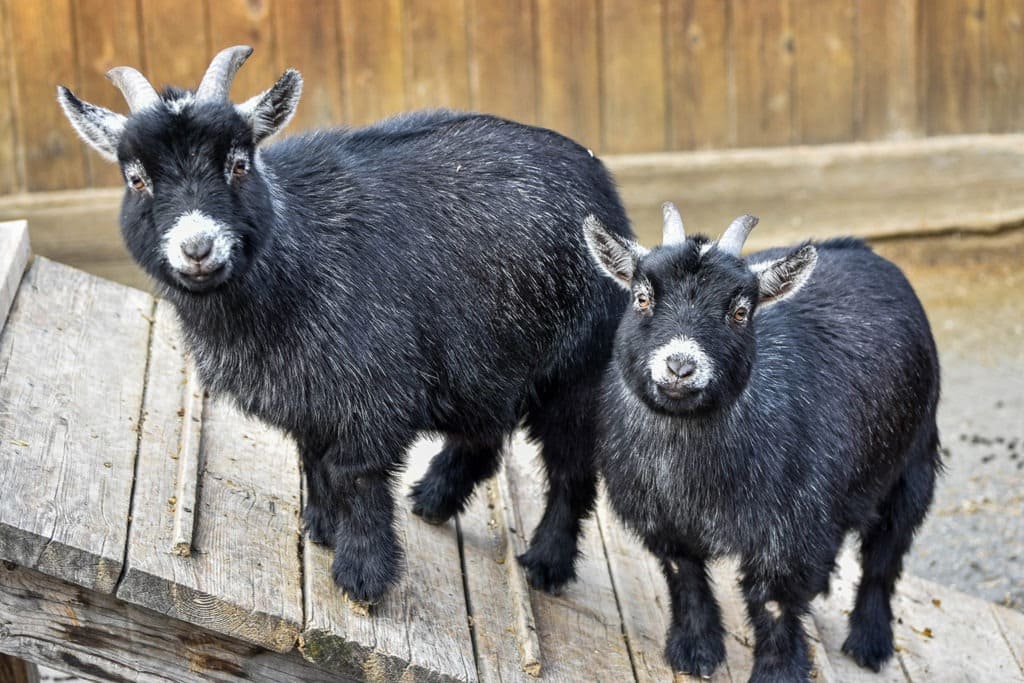
Pygmy goats are also remarkably hardy and adaptable. They can thrive in various climates, from hot summers to cold winters, as long as they have proper shelter. With a lifespan of 10-15 years, getting pygmy goats is a long-term commitment that can bring years of joy to your family.
The Golden Rule: Never Just One
Here’s the most important thing you need to know before we go any further: you cannot keep just one pygmy goat. I repeat: these are herd animals that absolutely require companionship. A single goat will become lonely, stressed, and potentially destructive.
I learned this lesson secondhand when my friend bought a single goat thinking it would bond with her family dog. The poor goat spent its days calling plaintively for companions that never came, and eventually became so stressed it developed health issues.
The moment she added a second goat, everything changed. The first goat perked up, started eating properly again, and returned to its playful self.
The minimum is two goats, but many experienced goat keepers recommend the “pair and a spare” approach – three goats total. This way, if one needs veterinary care or gets separated from the group, the others still have companionship.
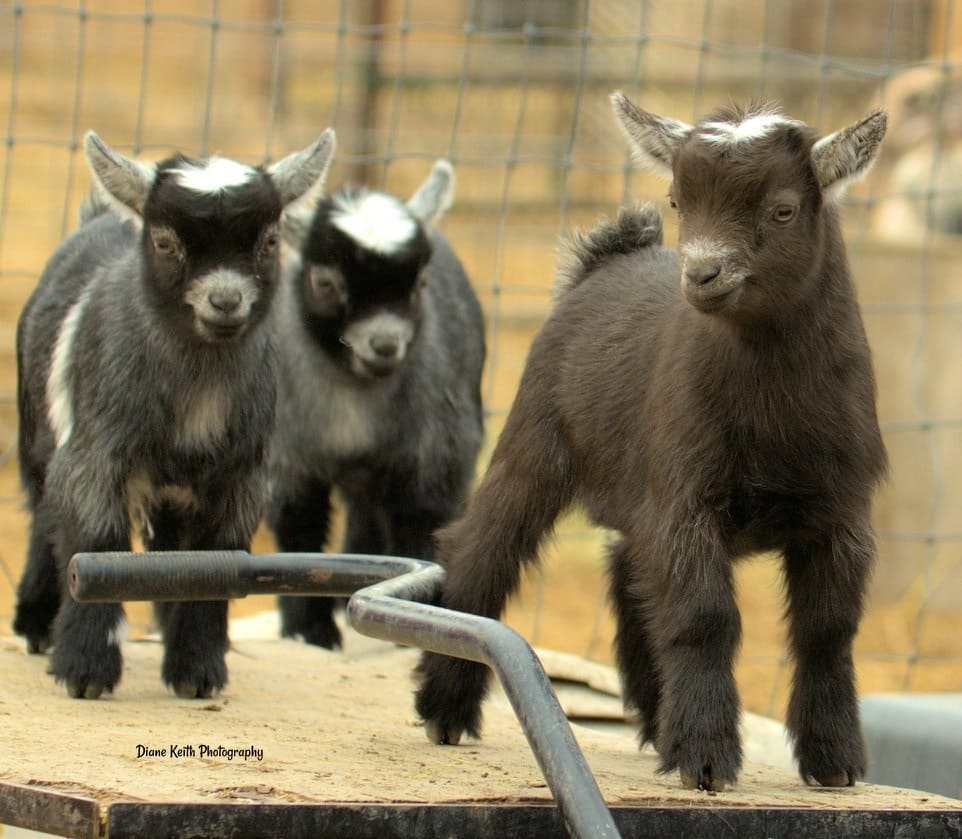
Choosing Your Herd:
If you’re not planning to breed, I highly recommend choosing wethers (castrated males). They make excellent pets without the complications that come with intact males or females.
Intact males (bucks) can be quite musky, especially during breeding season, and have some rather unpleasant habits like urinating on themselves. Does (females) go into heat every 3-4 weeks and can become quite vocal about it.
When selecting your goats, consider their age carefully. Very young kids (under 12 weeks) require more intensive care and aren’t fully weaned, while older goats are already set in their ways. Sweet spot? Look for goats between 3-6 months old that have been well-socialized and are fully weaned but still young enough to bond with you.
Housing: Creating a Goat Paradise
Pygmy goats don’t need a mansion, but they do need appropriate shelter and space. Think of it as designing a small apartment for very active, mischievous roommates who love to climb on furniture.
Shelter Essentials
Your goats need a dry, draft-free shelter that protects them from rain, wind, and extreme temperatures. An 8×10 foot shed is perfect for 2-3 pygmy goats.
The structure should have good ventilation without drafts (goats hate being cold and wet), raised sleeping areas like benches or platforms since goats prefer to sleep off the ground, easy access for you to clean and care for the animals, and proper height around 6-7 feet tall to make cleaning much easier.
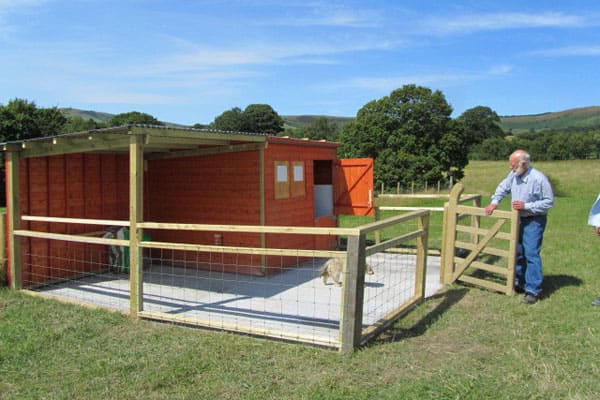
I built my goats’ shelter using a simple three-sided design with the open side facing away from prevailing winds. Inside, I installed sleeping benches at different heights – it looks like goat bunk beds, and they absolutely love it.
Protecting Your Herd from Predators
While pygmy goats are small, they’re not defenseless, but they do need protection from predators like coyotes, dogs, bobcats, and birds of prey. Your shelter should be secure enough to keep predators out at night, and if you’re in an area with significant predator pressure, consider adding hardware cloth to windows and ensuring doors close securely.
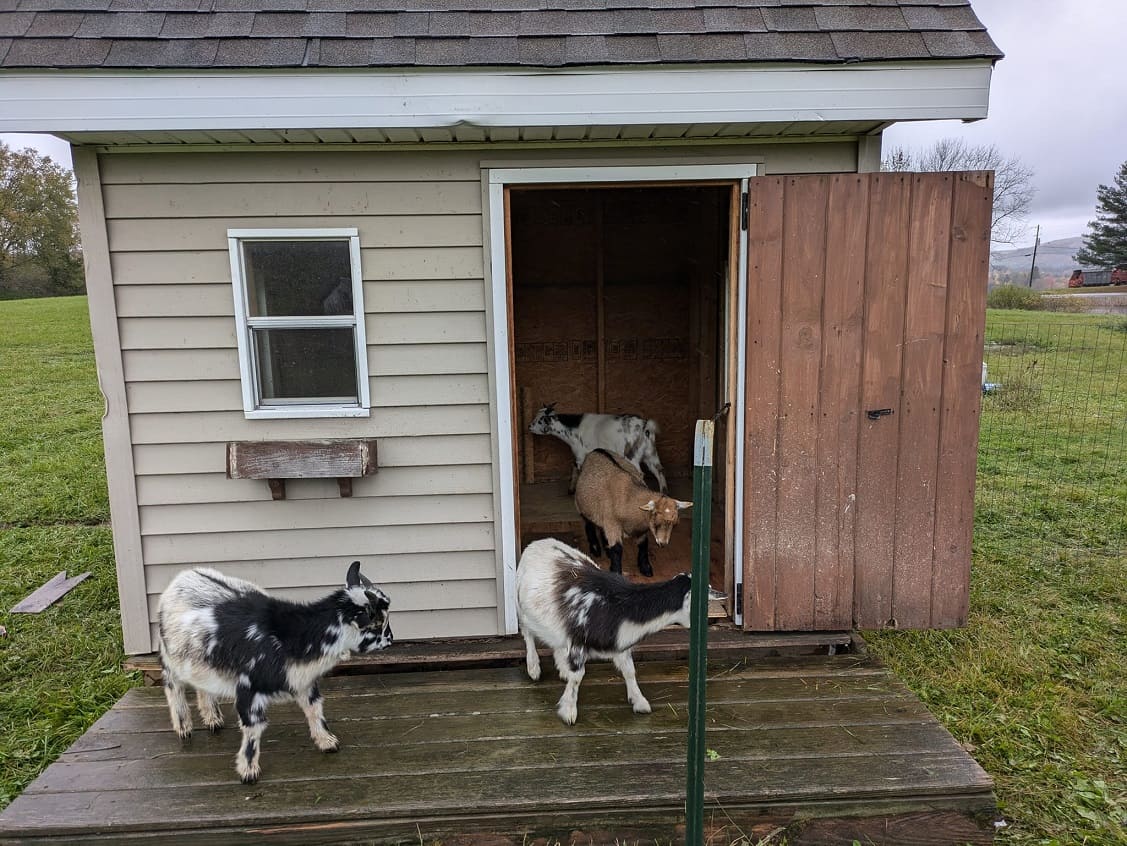
During the day, a well-fenced area usually provides adequate protection, but if you have persistent predator problems, you might need to invest in livestock guardian animals or motion-activated lights. I’ve found that simply having secure nighttime housing eliminates most predator issues, since that’s when most attacks occur.
Read the Ultimate Guide to Protecting Your Backyard Chickens from Predators
The Great Fencing Challenge
Let me be honest: pygmy goats are escape artists. They’re like furry little Houdinis who view every fence as a personal challenge. I cannot stress enough how important good fencing is.
You’ll need fencing that’s at least 4 feet high, though 5 feet is better if you have particularly athletic goats. Woven wire fencing with 4-inch square openings works well. Avoid chain link – goats can easily climb it. The fence should also extend slightly into the ground or have a bottom rail to prevent digging escapes.
Here’s a pro tip I learned the hard way: add electric wire at the top and bottom of your fence. The top wire prevents climbing, and the bottom wire discourages digging.
When Maple discovered she could squeeze under our original fence, we spent a very long afternoon chasing her around the neighborhood. The electric wire solved that problem immediately.
Space Requirements
For outdoor space, plan for about 200-250 square feet per goat minimum, though more is always better. If you have limited space, you can supplement with supervised free-ranging time or even leash walks (yes, goats can be leash trained!).
Don’t forget to include climbing structures in their enclosure. Old cable spools, sturdy picnic tables, or custom-built platforms will provide hours of entertainment. Just make sure these structures aren’t close enough to the fence for your goats to use them as launching pads for their great escapes.

Feeding: Fueling Your Mini Athletes
Feeding pygmy goats is surprisingly straightforward, but there are some important guidelines to follow to keep them healthy and prevent problems.
The Foundation: Quality Hay
Good quality grass hay should make up about 70% of your goats’ diet. Avoid alfalfa hay for wethers and non-breeding females, as it can contribute to urinary stones (urinary calculi), particularly in males. I buy my hay from a local farmer who cuts second-cutting grass hay – it’s leafy, smells sweet, and my goats devour it.
Each goat will eat about 1-2 pounds of hay per day, depending on their size and whether they have access to pasture. Use a hay feeder to minimize waste – goats are notoriously picky eaters and won’t eat hay that’s been stepped on or soiled.
Essential Minerals and Water
This is crucial: goats need access to loose goat-specific minerals at all times. Don’t use sheep or cattle minerals, as goats have different nutritional requirements. I keep loose minerals in a small feeder mounted inside their shelter where it stays dry.
Fresh, clean water should always be available too. Goats drink 1-2 gallons per day, more in hot weather or if they’re pregnant or nursing. I use heated buckets in winter and make sure to clean water containers regularly.
Here’s How to Identify & Treat Dehydration in Newborn Livestock
The Grain Situation
Here’s where things get interesting. Many pygmy goats, especially wethers on good pasture, don’t need grain at all. Overfeeding grain can lead to obesity and health problems. However, pregnant or nursing does, young growing goats, and goats without access to quality pasture may benefit from small amounts of goat-specific feed.
If you do feed grain, limit it to about 1/2 to 1 cup per adult goat per day, split into two feedings. Use it more as a training tool and treat than a dietary staple.
Treats, Foraging, and What to Avoid
Pygmy goats are natural browsers, meaning they prefer eating leaves, twigs, and bark over grass. They love treats like apple slices, carrots, and small pieces of bread, but moderation is key. Too many treats can upset their digestive system.
One of my favorite activities is setting up “browse bags” – mesh bags filled with safe branches and leaves hung at different heights. It provides mental stimulation and satisfies their natural foraging instincts.
Critical Plant Safety Information
This is where we need to talk seriously about poisonous plants, because this can literally be a matter of life and death. Goats are curious creatures that will nibble on just about anything, and some common plants can be fatal to them.
The most dangerous plants include azaleas and rhododendrons (even small amounts can kill), yew (extremely toxic), oleander, mountain laurel, and wild cherry leaves when wilted. Other plants to avoid include daffodils, tulips and other bulb flowers, rhubarb leaves, avocado (all parts), and large quantities of oak or maple leaves.
Before letting your goats have access to any area, walk through it carefully and remove or fence off any questionable plants. When in doubt, don’t allow access. I keep a laminated list of toxic plants in my barn and reference it whenever I’m unsure about vegetation in new areas.
Health and Wellness: Keeping Your Goats Thriving
Pygmy goats are generally hardy animals, but like all livestock, they need regular health maintenance and monitoring.
Essential Health Tasks
Hoof trimming is probably the most important regular maintenance task. Goat hooves grow continuously and need trimming every 6-8 weeks. It’s like giving them a pedicure! I invested in quality hoof trimmers and a milk stand (which doubles as a grooming stand), making the job much easier.
Annual vaccinations are crucial too. At minimum, your goats should receive CD&T vaccinations protecting against enterotoxemia and tetanus. Pregnant does get a booster about a month before kidding.
For parasite management, internal parasites, particularly barberpole worms, are a constant concern. Rather than deworming on a schedule, I do regular fecal egg counts and FAMACHA scoring (checking eyelid color for signs of anemia) to determine when treatment is needed.
Recognizing Health Problems Early
The key to keeping goats healthy is catching problems early. Healthy goats are alert, curious about their surroundings, have bright clear eyes, maintain good appetite, and move normally without limping or stiffness. Their breathing should be quiet and easy, and they should be interested in interacting with you or other goats.
Warning signs that require immediate attention include lethargy or depression, loss of appetite, unusual vocalizations like grinding teeth (which indicates pain), difficulty breathing or coughing, diarrhea or straining, bloated appearance on the left side, limping or reluctance to move, discharge from eyes or nose, and isolation from other goats.
One thing I’ve learned is to trust your instincts. If something seems “off” about one of your goats, even if you can’t pinpoint exactly what, keep a close eye on them and don’t hesitate to call your vet.
Common Health Issues
Bloat can be life-threatening and is often caused by sudden diet changes or eating too much grain. Prevention is key – make dietary changes gradually and avoid overfeeding.
Urinary calculi are more common in wethers and can be prevented with proper diet and ensuring adequate water intake. Respiratory issues can develop when goats are exposed to poor ventilation and dusty conditions, so keep their shelter clean and well-ventilated.
Transportation and Veterinary Care
Eventually, you’ll need to transport your goats for veterinary care or other reasons. A secure dog crate or small livestock trailer works well for pygmy goats. Make sure the vehicle is well-ventilated and the goats can’t slip on smooth surfaces. I line my transport crate with rubber mats and bring a familiar companion if only one goat needs to travel.
Finding a veterinarian experienced with goats before you need one is essential. Not all vets are comfortable treating goats, so research options in your area early. Keep a basic goat first-aid kit that includes a thermometer (normal goat temp is 101.5-103.5°F), electrolyte solution, bloat treatment, antiseptic for wounds, and your hoof trimming supplies.
Read more about Transitioning Your Horses to Spring Pasture: A Guide to a Successful and Healthy Transition
The Reality Check: Daily Life with Pygmy Goats
Let me paint you a realistic picture of what daily life looks like with pygmy goats, because Instagram photos of cute goats don’t show you everything.
Morning and Evening Routines
Every morning starts with a head count and quick health check. Are both goats moving normally? Eating well? Any signs of injury or illness? Then it’s time for fresh water, hay if needed, and a small treat while I check their feet and give them some attention.
Evening care is usually simpler – another head count, fresh water if needed, and making sure they’re secure for the night. During extreme weather, morning and evening checks become more detailed.
Seasonal Considerations
Summer care means providing shade and plenty of fresh water. Goats hate being hot more than being cold. I set up a kiddie pool (they won’t drink from it, but it helps cool the ground), and make sure their shelter has good airflow.
Winter brings its own challenges. My goats grow magnificent winter coats that keep them warm, but they still need shelter from wind and precipitation. I add extra bedding and check water more frequently since it can freeze.
Spring is kidding season if you have does, and prime time for pasture rotation and health checks as parasites become more active. Fall means annual vaccinations and preparing for winter, plus stocking up on hay for the months ahead.
The Time Commitment
Daily care takes about 30 minutes in the morning and 15 minutes in the evening. Add weekly hoof checks, monthly deeper health assessments, and occasional escapes to chase down, and you’re looking at a manageable but consistent commitment.
The unexpected emergency vet call at 7 PM on a Sunday? That’s part of the package too. When Clover got her head stuck in the fence (don’t ask), it took two hours, three people, and some creative problem-solving to free her unharmed.
Training and Handling Your Goats
Well-trained goats are safer and more enjoyable to be around. Start training early and be consistent. Goats respond well to positive reinforcement, so use treats and praise to encourage good behavior.
Teach your goats to walk on a collar and lead rope, which makes veterinary exams and transportation much easier. Practice getting them used to having their feet handled for hoof trimming, and train them to stand on a milk stand or grooming platform.
Basic commands like “come,” “stay,” and “up” (for getting on the platform) are surprisingly easy to teach goats. They’re intelligent animals that enjoy the mental stimulation of learning new things.
Are Pygmy Goats Right for You?
Before you fall completely in love with the idea of pygmy goats, let’s do an honest assessment of whether they fit your lifestyle.
The Joys
The entertainment value is unmatched – these goats are better than television. Their antics will make you laugh daily. Well-socialized pygmy goats are surprisingly affectionate and bond strongly with their caretakers.
They’re large enough to be interesting but small enough to be manageable, and they’re versatile enough to help with brush clearing, provide small amounts of milk, and some people even train them for therapy work.
The Challenges
Good fencing is expensive but essential, and these escape artists will test every weakness. Not all vets are comfortable with goats, and emergency care can be expensive. You need at least two, which doubles everything – cost, space, and care time.
Goats can be vocal, especially does in heat or when they want something, and committing to 10-15 years is significant.
Related post: Understanding Rooster Crows: More Than Just a Morning Alarm
Legal Considerations
Before you do anything else, check your local zoning laws and HOA regulations. Many areas classify goats as livestock and prohibit them in residential areas. You may need special permits, herd numbers, or movement licenses depending on your location.
Getting Started: Finding Your Perfect Goats
When you’re ready to take the plunge, choosing the right goats and breeder is crucial.
Finding a Good Breeder
Look for breeders who test their herds for diseases like CAE (Caprine Arthritis Encephalitis), vaccinate their animals regularly, keep detailed health records, allow you to visit and meet the goats, and are willing to answer questions and provide ongoing support.
Avoid buying goats from auctions or unknown sources – the savings aren’t worth the potential health risks.
What to Look For
Healthy goats should be alert, curious, and active. Their eyes should be bright, coats shiny, and they should move without limping. Ask about vaccination history, whether the goats are disbudded (horns removed), and what they’ve been eating.
Bringing Them Home
Your new goats will likely be nervous for the first few weeks. This is completely normal. Spend time with them daily, bring treats, and talk to them. They’ll gradually relax and start showing their personalities.
I still remember the day Maple first approached me for scratches instead of backing away nervously. It felt like a major victory!
Related post: Small Breeds, Big Personality: A Guide to Miniature Cows
Frequently Asked Questions
- Can pygmy goats live in my backyard?
Possibly, but check your local laws first. They need appropriate fencing, shelter, and enough space to exercise. A typical suburban backyard can work for 2-3 pygmy goats if properly set up.
- Do pygmy goats make good pets for children?
They can be excellent with children when properly socialized, but adult supervision is always necessary. Goats can be pushy and may accidentally knock over small children during play.
- How much do pygmy goats cost to keep?
Initial setup (shelter, fencing) can be expensive ($1,000-3,000), but ongoing costs are relatively modest. Budget about $200-400 per goat annually for feed, hay, minerals, and routine veterinary care.
- Can I milk pygmy goats?
Pygmy does can be milked, but they produce only 1-2 quarts per day with high butterfat content. If milk production is your primary goal, consider Nigerian Dwarf goats instead.
- What’s the difference between pygmy goats and Nigerian Dwarf goats?
Pygmy goats are stockier and bred primarily as pets or meat animals. Nigerian Dwarfs are more refined in appearance and better milk producers. Both are great choices for different purposes.
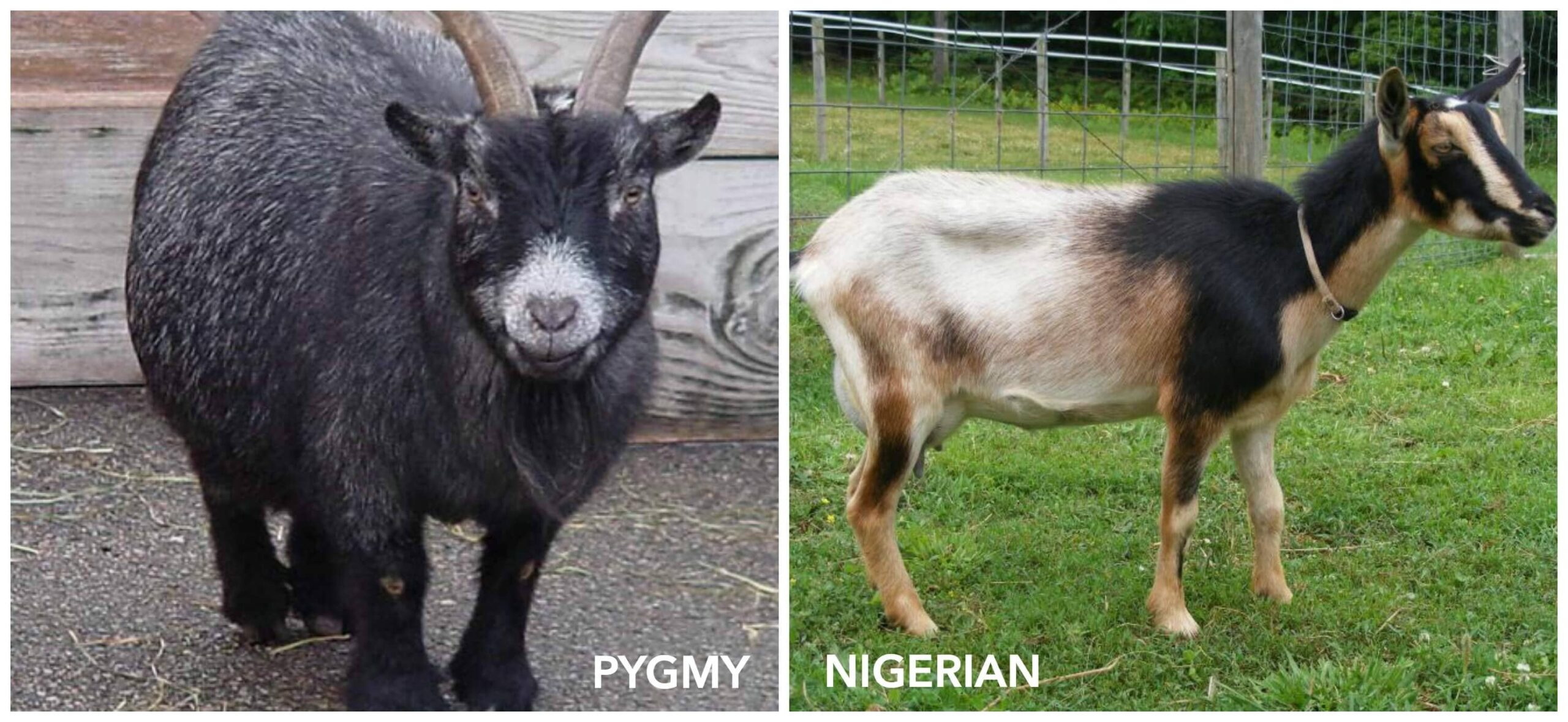
A Personal Reflection
Two years into my pygmy goat adventure, I can honestly say it’s been one of the most rewarding experiences of my life. Yes, there have been challenges – the great fence escape of last summer, the 2 AM emergency when Clover had a mild case of bloat, and the ongoing battle to keep them from eating my rose bushes.
But the joy they bring far outweighs the challenges. There’s something magical about watching these little characters navigate their world with such confidence and curiosity.
When Maple greets me at the gate each morning with her happy little bleats, or when Clover decides to nap in a sunny spot next to me while I read, I’m reminded why so many people fall in love with these remarkable animals.
Pygmy goats aren’t just pets – they’re personalities with hooves. They’ll teach you patience, make you laugh, and give you a deeper appreciation for the intelligence and individuality of farm animals.
If you have the space, time, and legal clearance to keep them, and you’re prepared for the commitment they require, pygmy goats might just be the perfect addition to your family.
Just remember: start with proper fencing. Trust me on this one.
Ready to start your pygmy goat journey? Take your time researching local breeders, visit some goats in person, and make sure you have everything set up before bringing your new companions home. The wait will be worth it when you see those first adorable goat antics in your own backyard.
